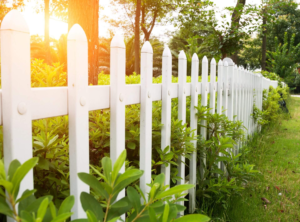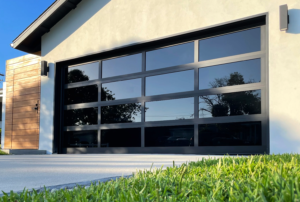When you think of noble professions, medical jobs and teaching immediately come to mind. But what about plumbing?

Plumbers install and repair piping systems and fixtures like sinks, toilets, showers, and water heaters. They read and interpret blueprints and building codes to determine the location and arrangement of pipes and other components.
Plumbing installation is the process of creating an intricate network of pipes, appliances and fixtures that regulate sewage, drainage and drinking water in buildings. It requires technical prowess, problem-solving abilities, and strong communication skills. A good plumber can make the difference between a troublesome leak and an efficient, well-functioning system.
The first step in plumbing installation is to ascertain the location of existing and future plumbing lines. This involves locating any existing pipes, ensuring the space can accommodate new appliances, and measuring for future piping. The plumber may also have to remove drywall, trim and flooring to access and install new pipes or fixtures. The plumber then tests the system for any leaks, water pressure or other issues.
Plumbers must be physically fit to perform their duties. They often find themselves working in cramped and uncomfortable spaces, using multiple tools at once and navigating around obstacles. They must have excellent hand-eye coordination to ensure the accuracy of their work and prevent injuries. Plumbers are also required to follow strict safety protocols to protect themselves and their customers.
Another sign of a professional plumber is their punctuality and dependability. Good plumbers will be on time and courteous, calling before coming to your home and presenting themselves professionally when they arrive. They will also clean up after themselves when they’re finished.
Whether you’re building a new house or remodeling an old one, a good plumber will be able to assess your needs and recommend the best solutions. They’ll have a wide range of plumbing parts in their vans, so you won’t have to wait long for them to complete your project. They’ll also provide you with a clear estimate and timeline, allowing you to plan accordingly. Many plumbers offer maintenance agreements, which can save you money on service calls and help prevent emergency problems. As a bonus, you’ll build a relationship with the plumber and they’ll get to know your home and its plumbing needs. This can lead to faster service in emergencies, and you might even get a discount on services as an established customer.
Repair
Plumbers repair and maintain the pipes, fixtures, and appliances that deliver water and carry waste away in homes and businesses. Their job is to ensure that these systems function properly by testing for leaks, clogs, and other issues. They also install new plumbing fixtures, such as sinks, toilets, and faucets. This work requires them to cut holes in floors, walls, and ceilings, and they may need to solder copper pipes. Plumbers also use specialized tools to unclog drains and pipes and to repair broken components.
Whether they’re installing new piping or repairing existing ones, plumbers must follow building codes and blueprints to ensure the work is done correctly. They often use a variety of tools, including pipe cutters, saws, and pipe wrenches. Some plumbers also use a camera to inspect underground pipes for damage and clogs.
One of the most common problems homeowners call plumbers for is clogged drains and pipes. These are usually caused by too much food, hair, paper products, or other insoluble materials being sent down the drains and into the sewer system. Plumbers can use special snakes or augers to remove these items and restore the flow of wastewater through the pipes.
Another common problem is leaking showers and tubs. These can cause significant water damage if left unchecked. Plumbers can use a variety of methods to fix these, including pipe patching, showerhead covers, and water valve replacement. Some plumbers are also trained in trenchless technologies, which can repair aging pipes without the need for extensive digging.
If a plumber encounters a serious issue, like a cracked sewer line, they must take additional steps to resolve the problem. This involves opening up the affected area of the piping and possibly replacing it entirely. This process can be disruptive to households, so it’s important for plumbers to communicate clearly with customers and keep them updated on the progress of the repair.
Other specialty jobs that plumbers sometimes take on include backflow prevention, which is necessary to protect potable water supplies from contamination, and the installation of gas lines. These projects require them to be licensed by their local governments, and they must follow strict safety guidelines.
Maintenance
When it comes to plumbing maintenance, a good plumber can help you head off costly emergency repairs. This is because plumbers can fix many issues before they become disasters — including low water pressure, clogged drains and overflowing toilets. The best way to keep your plumbing running smoothly is by scheduling regular maintenance visits from a licensed plumber.
In addition to routine cleaning, testing water pressure, inspecting toilet components and examining water heaters, a plumber can perform many tasks that will extend the life of your plumbing system. These include:
While you may think that it’s best to hire a local plumbing company for your maintenance needs, it is important to check the reputation of a plumbing business before hiring them. Some companies are not honest about their prices, and some may even charge extra for hidden fees. It’s also wise to research a company before making a decision and ask for an estimate before having any work done.
A plumbing service should always provide clear communication with customers about what services they will be performing and why. This will help prevent any surprises or conflicting opinions. In addition, a plumbing service should use the right tools and equipment for each job. For example, it’s important to use high-quality parts because these are made to withstand the wear and tear of daily plumbing usage.
Another aspect of good plumbing maintenance is ensuring that your water shut-off valve works properly. It’s essential to know how to turn off your water supply in an emergency, and a plumber can make sure that it is working correctly.
Plumbing maintenance also includes regularly checking and repairing leaks, keeping drains clean, and using environmentally friendly materials. It’s also important to conserve water, as this can reduce strain on your plumbing system and save you money on your utility bills.
When you’re looking for a reliable plumber for your maintenance needs, consider their track record, training, and customer service. Make sure to also look for a plumbing service that uses quality parts and is licensed and insured. This will ensure that you’re getting a high-quality, professional plumber who is experienced in handling the job at hand.
Customer Service
To build a successful plumbing company, it’s crucial to prioritize customer service. Customers rely on reviews and word-of-mouth recommendations to choose a plumber, so providing an exceptional customer experience is the best way to grow your business. Whether it’s through a simple phone call or a visit to the client’s home, excellent plumber customer service is essential.
Many customers reach out to a plumbing business for help with issues like clogged toilets, leaky faucets, and slow or blocked drains. Having an experienced and professional team of plumbing support agents on standby to answer calls is vital for any plumbing business. These professionals can provide valuable information, assess the urgency of a repair and schedule an appointment. Using a service like PATLive can make sure your team is always ready to assist with any call, at any time of the day.
When a potential customer calls, you can’t afford to miss the call or send the client to voicemail. Having an answering service that can handle all your incoming calls allows you to focus on new sales opportunities without missing a beat. This type of call management software can also give you an overview of all the customer interactions and schedules.
After a plumbing job is completed, it’s important to follow up with the customer to see how the work went and if they are satisfied with the results. This customer-centric approach can help you retain more clients and learn from their feedback to improve your services.
The plumbing industry is a competitive space, so building a loyal customer base is critical to the success of your business. Keeping your customers happy is the best way to gain repeat and referral business, so it’s important to set yourself apart from the competition. A few key customer service practices can make all the difference:
One way to do this is by offering a 24/7 online booking portal so that customers can get in touch with you anytime, anywhere. This can reduce your reliance on manual scheduling, saving you time and money. Another way to create a great experience for your customers is by giving them the ability to book an appointment through text message, which is a fast and convenient option for busy homeowners. Finally, be sure to respond to any negative reviews with empathy and professionalism — it will only help your reputation.








